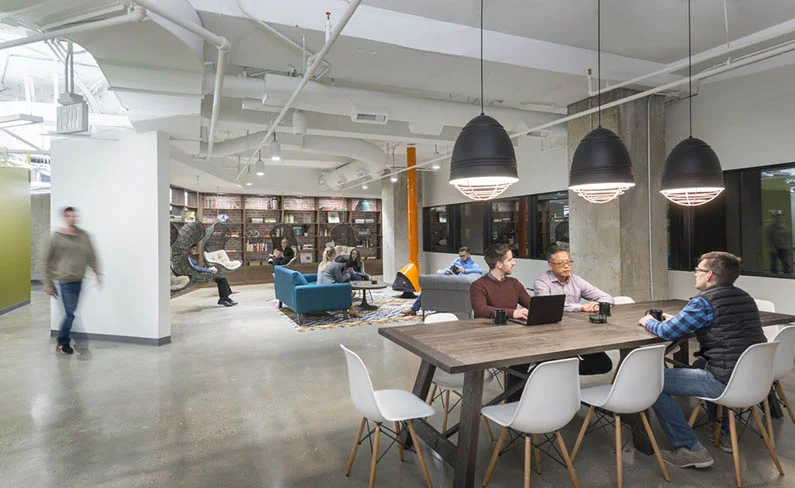Open office design draws mixed reviews these days, and noise is one of the primary reasons. Spaces intended to facilitate the free flow of people and ideas often allow noisy distractions to travel, too. But thoughtful design, paired with a change management program to educate staff, can both enhance connectivity and minimize distractions.
So how do we deliver workplaces that support our clients' goals for branding, functionality, and productivity? What DLR Group workplace strategist Gretchen Wahab, acoustician Anat Grant, and myself discuss below is DLR Group's multi-pronged approach that takes equal advantage of expertise in acoustics, office culture, communication, and design.
AZ: Distractions at work have been linked to drops in performance as high as 66%. Let's talk about the first step in finding a comfortable sound environment for any office.
Gretchen Wahab: Every organization is unique, so understanding its culture and work process is critical. A law firm where people are holding confidential conversations has different acoustical needs than an advertising agency where people are openly bouncing ideas off each other. Other businesses benefit from a blended environment to support various groups with diverse responsibilities--vibrant, open areas where ideas travel fast, and quiet spaces for those who require deep, individual focus or handle sensitive subject matter.
AZ: How do you uncover that culture, or that balance of needs?
GW: It all begins with discovery. Whenever we start a new project, we actively engage with a cross section of the types of people who will be working in the space to learn what kind of environment enables them to do their best work. Proprietary tools we've developed in-house, such as multi-dimensional surveys, identify teams that want a happy hum to embody the energy of their brand, and teams that are looking to convey a more conservative atmosphere. In this extensive discovery process, we often find multiple team personas within a single organization. We often recommend an activity-based layout for just this reason.
AZ: So we know that a deep cultural understanding is key to driving the right plan for an organization. We can right-size the number of focus rooms, tailor collaborative areas, and create new blended spaces like work cafés that support social connections, and serve as alternative space for individual work. How does our acoustical expertise bring even more value to all of those types of spaces?

